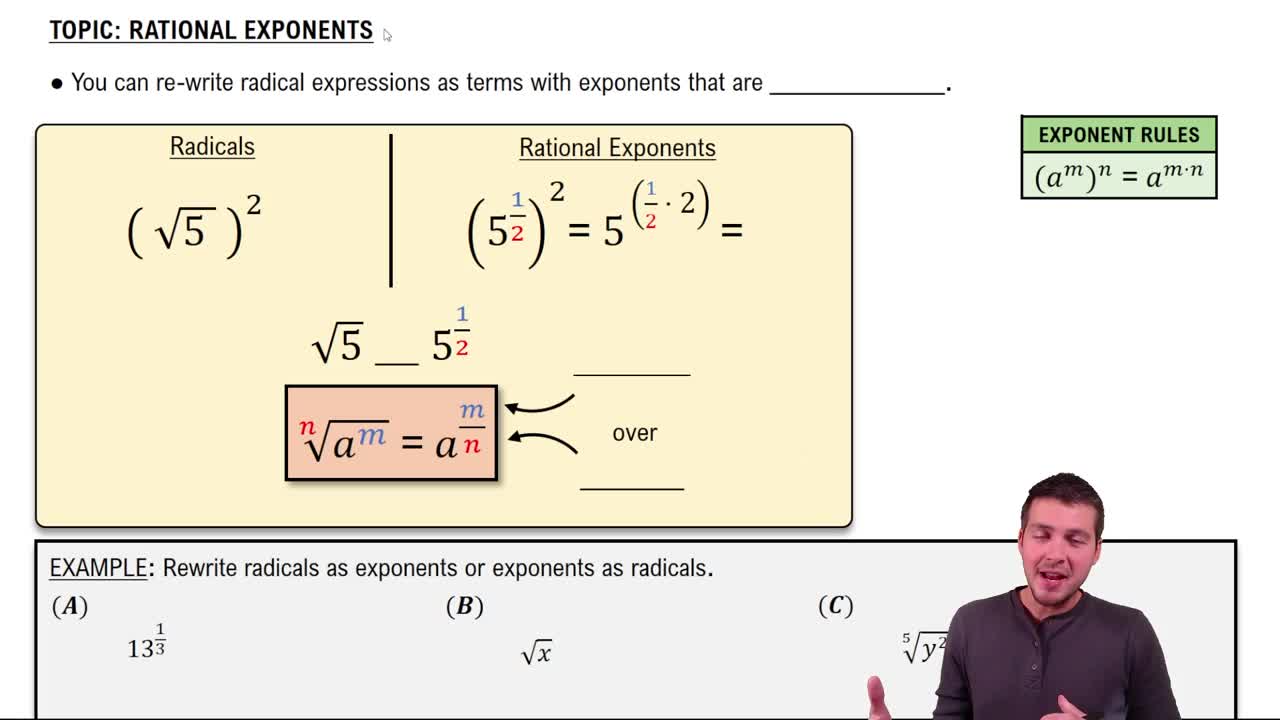Here are the essential concepts you must grasp in order to answer the question correctly.
Rational Exponents
Rational exponents are a way to express roots using fractional powers. For example, an exponent of 1/n indicates the n-th root of a number. In the expression (-3x)^(-1/3), the negative exponent signifies the reciprocal, while the fractional part indicates the cube root.
Recommended video:
Radical Expressions
Radical expressions involve roots, such as square roots or cube roots, and are often represented using the radical symbol (√). The expression can be rewritten in terms of rational exponents, where the n-th root of a number 'a' is expressed as a^(1/n). Understanding how to convert between these forms is essential for solving problems involving exponents and roots.
Recommended video:
Radical Expressions with Fractions
Reciprocal of a Number
The reciprocal of a number is defined as 1 divided by that number. In the context of exponents, a negative exponent indicates taking the reciprocal of the base raised to the positive exponent. For instance, (-3x)^(-1/3) translates to 1/((-3x)^(1/3)), which is crucial for simplifying expressions involving negative exponents.
Recommended video:



